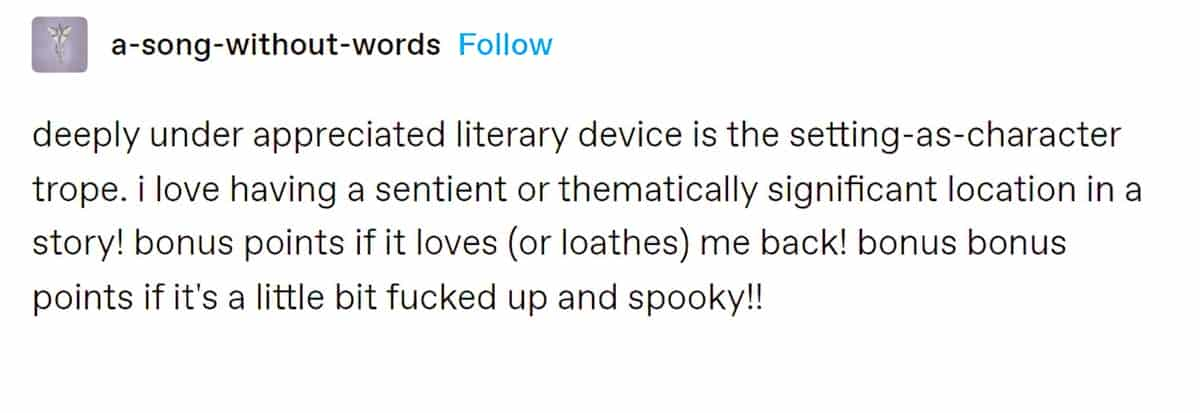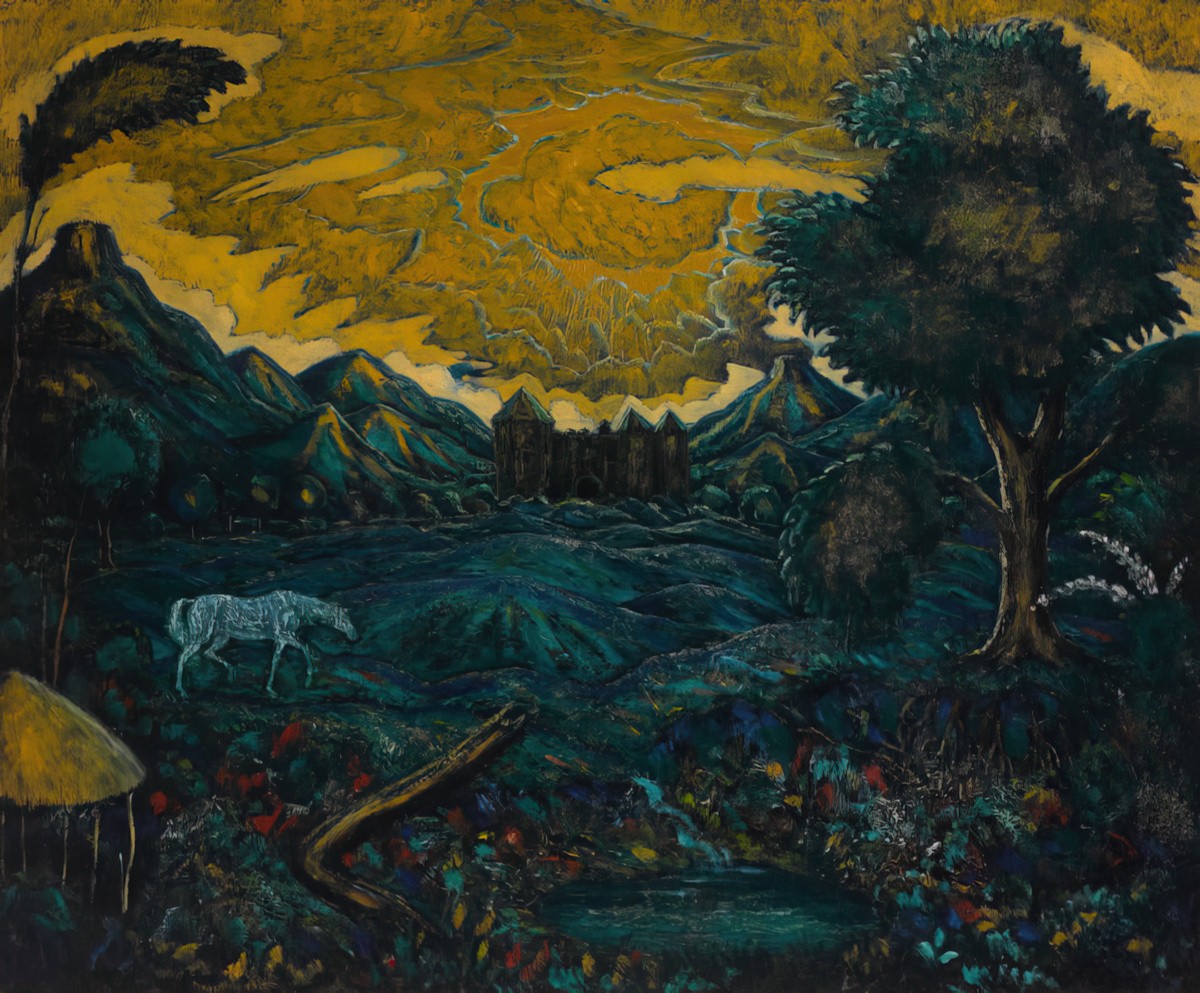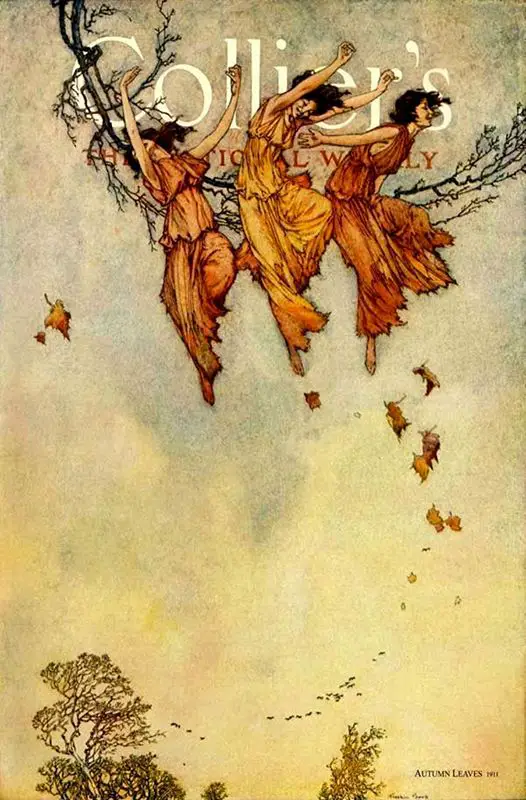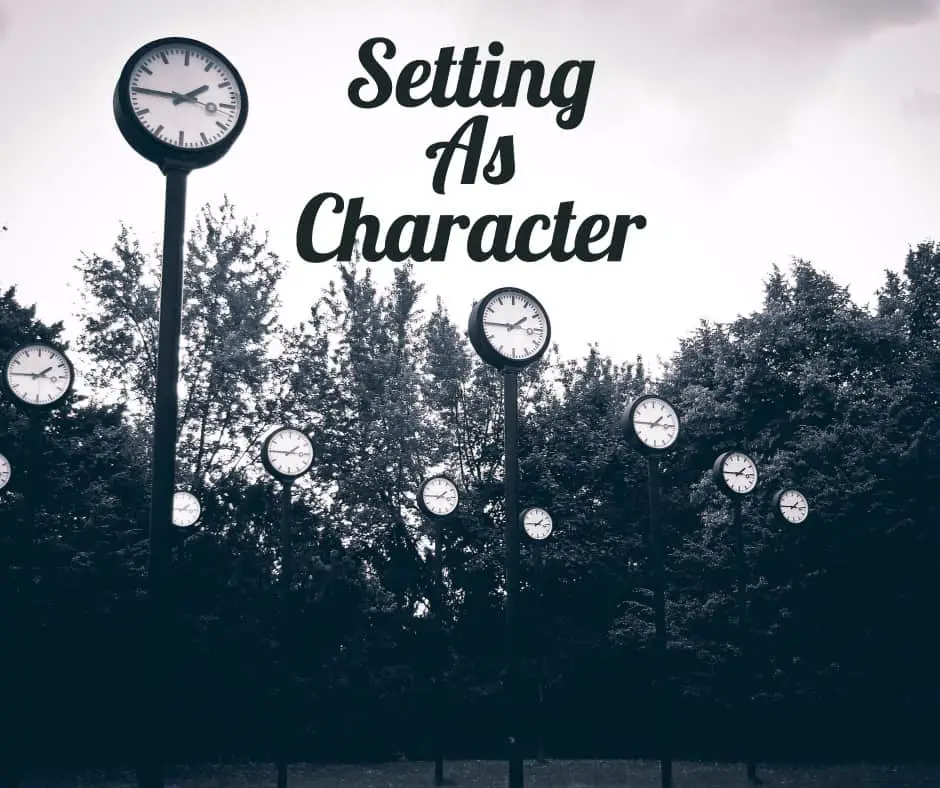When asked to write something about setting, for an essay or an exam, what exactly are we being asked to describe?

When I was in high school my English teachers advised us all against writing the exam essay on setting. So I did. But I wouldn’t advise the same thing. Setting essays provide plenty of opportunity for demonstrating knowledge and understanding of a work.
At about junior high school level, setting comprises two things: TIME and PLACE.
But a more sophisticated breakdown of the concept of setting involves different aspects to include:
PERIOD
a story’s place in time. This can actually be broken down further into ‘author period‘ (the time when the author originally created or published the work, and ‘narrator period‘, which is the time when the narrator of a work supposedly narrates the story. (Reader period. Counterpoint this against when the reader reads the work, if this is useful.)
DURATION
a story’s length through time. Maybe it takes place over a year, cycling through each season. Maybe it takes place over 24 hours. Some people call this the temporal setting. In many stories we don’t know exactly how long something is meant to take, and we are given no point in time. In that case we might say ‘atemporal’. Highly symbolic stories tend to be atemporal, to emphasis their universality and the state of dreaming, which is unbound by time (and space).
LOCATION
a story’s place in space — On a continuum: a real place, fictional but based on a real place, completely made up, otherworldly.
MANMADE SPACES
towns, cities, parks. Manmade places tend to symbolise the conscious, tamed part of our minds.
People are like cities: We all have alleys and gardens and secret rooftops and places where daisies sprout between the sidewalk cracks, but most of the time all we let each other see is is a postcard glimpse of a skyline or a polished square. Love lets you find those hidden places in another person, even the ones they didn’t know were there, even the ones they wouldn’t have thought to call beautiful themselves.
Hilary T. Smith (Wild Awake)
NATURAL SETTINGS
forests (which usually border a town in fairytales) tend to represent the subconscious. Forests are especially interesting, but we also have rivers and mountains.
TECHNOLOGY CRUCIAL TO THIS PARTICULAR STORY
in a fantasy it might be a system of magic in lieu of technology. In speculative fiction this will be at the forefront. Even in non-SF work, the tech of the time is relevant to setting.
LEVEL OF CONFLICT
the story’s position on the hierarchy of human struggles. If ‘time and place’ refers to temporal and physical location, this refers to the social one. What’s going on in the wider world of the story, politically, socially, environmentally…? A ten dollar word to use here is ‘milieu’.
When talking about setting and conflict we might also talk about how the apparent setting lines up (or conflicts) with the reality of the setting once we really get to know it.
The fact is, settings wear narrative masks as much as characters do; the fairground an example of a ‘masked character’, or what we might also call a ‘Snail Under The Leaf’ setting, because all you need to do is scratch the surface of a perceived utopia and you get something completely different. Behind its glossy surface the fairground is always a very different beast, even if all that is is ‘not all that fun’. Suburbs and small towns are also commonly depicted as utopias with a dark side.
If applied to Breaking Bad:
- PERIOD — The first season aired 2008, and the story is set in either that year or very close to that year.
- DURATION — Although the series has taken 6 years to watch due to the time it takes to produce a series, the duration of the story is 2 years.
- LOCATION — Albuquerque, New Mexico; Mexico; in the homes of Walt, Jesse, Hank; in factories and small local businesses
- MANMADE SPACES — the houses, the factories, the high school, the streets, the hotel (depending on the episode, there are many)
- NATURAL SETTINGS — the Albuquerque desert, which can also kill you if you’re not careful
- TECHNOLOGY CRUCIAL TO THIS PARTICULAR STORY — equipment to produce methamphetamine, later in its purest form
- LEVEL OF CONFLICT — At a time when teachers aren’t paid enough to support a family, when health care is unaffordable to those working in the caring professions, when methamphetamine use is causing criminal harm and much victimization
If applied to Courage the Cowardly Dog:
- PERIOD — The style of house, the dress of the characters suggest contemporary late 1990s.
- DURATION — Each episode seems to ‘reset’ back to the beginning as if nothing happened before and nothing was learned. As evidence, Courage is never, ever believed when he raises the alarm about intruders. If this was a story which built upon itself, you’d expect Muriel to take him seriously after a while, because he’s never wrong.
- LOCATION — The fiction town of ‘Nowhere’ represents any Midwest rural town in America — anywhere flat, where it’s possible to live miles from anyone else.
- MANMADE SPACES — the house, the retail outlets, the nearby factories and experimental labs.
- NATURAL SETTINGS — the Midwest plains
- TECHNOLOGY CRUCIAL TO THIS PARTICULAR STORY — Opponents bring their own technology to each episode and use whatever they’ve got to try and defeat Courage. Courage has only a PC at his disposal, which is anthropomorphised and talks to him. It doesn’t give Courage the information he wants. This represents an early form of search engines, and comments on to a time when people were just starting to use the Internet. The Internet was much smaller then, and results were much fewer.
- LEVEL OF CONFLICT — Some have hypothesised that the setting of the farmhouse in Nowhere represents a dog’s experience rather than a real place — that Courage’s experiences are those of any dog who is housebound, not taken out for regular walks, and who sees every visitor as an opponent no matter their intention. The entire series could be considered a metaphor for what goes on inside a dog’s head, presented as understandable to human viewers, using familiar human tropes.
The cinema’s master storytellers give us the double-edged encounter we crave. First, the discovery of a world we do not know. No matter how intimate or epic, contemporary or historical, concrete or fantasized, the world of an eminent artist always strikes us as somewhat exotic or strange. Like an explorer parting forest leaves, we step wide-eyed into an untouched society, a cliche-free zone where the ordinary becomes extraordinary. Second, once inside this alien world, we find ourselves. Deep within these characters and their conflicts we discover our own humanity. We go to the movies to enter a new, fascinating world, to inhabit vicariously another human being who at first seems so unlike us and yet at heart is like us, to live in a fictional reality that illuminates our daily reality. We do not wish to escape life but to find life, to use our minds in fresh, experimental ways, to flex our emotions, to enjoy, to learn, to add depth to our days. Story was written to foster films of archetypal power and beauty that will give the world this dual pleasure.
Robert McKee

GENIUS LOCI
When talking about places as characters in literature, the Latin term Genius loci is useful. In classical Roman religion, a genius loci was the protective spirit of a place. If you ever come across a picture of a figure holding a bowl or a snake, that’s probably an ornament of the genius loci. (The plural is genii, by the way.) Light is important here. The genius loci is powered by the sun.
If you go to somewhere like Japan, or watch Japanese anime, you’ll see the Eastern equivalent, for example the butsudan in traditional Japanese homes. (A butsudan is a corner of a room where you put photos of dead loved ones and incense and food offerings.)
But in the West we mostly refer to ‘the spirit of the place’ rather than something that’s actively guarding.
The term used to refer specifically to gardens, but now can describe the spirit of any kind of place.

SETTING AS CHARACTER
Then there’s the ultimate in sophisticated essays about setting. This is where you write about how setting is basically one of the characters.
What do people mean when they talk about setting as character?
To the list above, let’s add the following of any work:
- Who else is there (apart from the main character)?
- How are these characters interconnected?
- What values do they share and disagree on?
Now to that fourth dimension: How is the setting a character in its own right? Let’s start with what makes a ‘character’.
- They have to want something. (If they don’t seem to want anything, they have to at least actively resist something, otherwise there’s no story.) Almost every story guru talks about this — it’s so elemental in narrative theory that I’m surprised I wasn’t taught it in school.
- Characters need to have something psychologically wrong with them.
- The most interesting characters also have a moral shortcoming — some way in which they’re treating others badly.
- The characters should have some kind of spiritual/psychological/actual big struggle, which eventually leads to some sort of anagnorisis.
- There should be some kind of character change. The change doesn’t have to be large — the ‘range of change’ might in fact be very small, but again, if there’s no change in the characters you haven’t got a story.
Let’s address these specifically human attributes one by one, as applied — this time — to a setting.
How does a setting want something?
Unless you subscribe to an olde worlde religion where you believe spirits exist in the river, in the mountains, in the trees, you probably agree that a physical setting doesn’t want anything — it just is.
However, there are certain aspects of setting — such as weather events — which can take on the persona of a monstrous character. A tornado behaves like a horror villain in its ‘single-minded’ wish to follow its course, caring not for the havoc its wreaks upon those in its path.
Hollywood is fond of odd-couple films, so you’ll be familiar with stories in which two contrasting characters are stuck together to achieve some kind of goal. Lethal Weapon, The African Queen, and Rush Hour are stand-out examples of that genre. Sometimes you get an odd-couple film which doesn’t contrast two characters — instead, it contrasts a character with their setting. This is known as a fish-out-of-water story. Beverly Hills Cop, City Slickers, Splash and so on.
When a setting is used to contrast a human character, the setting itself seems to take on human qualities, turning a story into a different take on the odd couple story. Hero against setting this time. People have a tendency to anthropomorphise, and sometimes it really does seem like nature itself is against you. In reality, the setting doesn’t ‘want’ anything, but when it rains six weekends in a row and you want to get out into the garden, it can seem like the weather has some sort of vendetta against you.
Writers can utilise the cognitive bias of anthropomorising natural events by juxtaposing the main character’s goals against natural events in the environment. Weather is a great one, but it might be a forest which characters can get lost in, or something much less dramatic, like a tall building which prevents an old man’s yard from getting any sun, thereby affecting his tomatoes.
How does a setting have a psychological shortcoming?
The only way a setting can have a psychological shortcoming is if we’re talking about the collective shortcoming of the people who are there — its visitors or inhabitants. For instance, the insularity of a community who is forced to accommodate strangers, or the lack of community of a big city which is later forced to band together to fight a common evil.
The concept of pathetic fallacy is crucial here.
If a setting is ‘gloomy’, that’s because the viewpoint character feels gloomy. Of course, in real life, a setting just is. If everything around you seems gloomy that’s because you’re seeing it that way. In fiction causality is presumed to work backwards — a character feels gloomy because the setting is gloomy. In earlier times in history, people really did think backwards in this way.
We in this country are like homeowners who inherited a house on a piece of land that is beautiful on the outside but whose soil is unstable loam and rock, heaving and contracting over generations, cracks patched but the deeper ruptures waved away for decades, centuries even.
from “America’s Enduring Caste System”, NYT. A beautiful example of a house as metaphor for human history.
Helen Campbell’s course of lectures on household economics given at the University of Wisconsin included a unit on the “organism of the house,” describing how its systems of air, light, heat, water, and ventilation had to remain in balance. She noted the house must grow “as a man does.” Maria Parola, author of Home Economics: A Practical Guide in Every Branch of Housekeeping, used the same metaphor. She talked about the framework of the house as the skeleton of the animate organism, and the plumbing and heating pipes as the circulatory system. Others talked of the shell of the house there for the protection of the soft inside body. (The home economists seem to have pioneered this kind of systems thinking, although it was soon also taken up by male architects. When this was done, tellingly, the metaphor sometimes shifted away from the body. Le Corbusier referred to a house as a “machine for living” in 1923.) The biological metaphors were also used in reverse when the body itself was also seen as a sort of house. Etiquette books sometimes referred to body maintenance as “good housekeeping,” for example, and often spoke of the “temple” of the body, comparing it to a physical, sacred space.
Beverly Gordon, Woman’s Domestic Body: The Conceptual Conflation of Women and Interiors in the Industrial Age, 1996
How does a setting have a moral shortcoming?
How does a setting treat ‘other’ characters badly? Your human characters can feel let down and abandoned by their home environment if they’ve dutifully tended to the land only to be faced with a drought which renders them unable to survive. In this way, farms can ‘betray’ farmers. Of course, it’s the farmers feeling this emotion. It’s entirely one-sided. That doesn’t matter in fiction.
How does a setting get caught up in a big struggle?
In a disaster story like Twister, the setting creates the big struggle. But it doesn’t have to seem ‘proactive’ — a desert just sits there minding its own business, but because a desert is inhospitable to human life, any human who tries to walk across desert sands is going to find themselves in a big struggle against the desert.
How does a setting have a anagnorisis?
Since this stage is inextricably linked to the ‘psychological shortcoming’ part of a story, the same holds true. A community of people can realise something at once, after some common big struggle. Or, maybe the community doesn’t realise anything, but the reader does.
How does a setting undergo a character arc?
To sum up, this portion of Cheryl Klein’s newsletter explains what most people mean when they talk about ‘setting as character’:
I would love any tips on how to make the setting come alive. Seems sometimes the setting is like a character.
I’d say treat the setting like a character, and try to develop it the way you would a character. Some questions to contemplate: What is the history of this place? Write out a timeline of it. What did it look like before any beings lived on/in it—its landscape, its climate? If it’s a human-made place (e.g. a house or a business or a town), who built it, and for what purpose, and why at that location? Who has occupied this place since, and how have they used it? If there were a “spirit of the place,” what would that spirit be like, and how would it have reacted to each of these occupants? Think of at least three specific details for each of its historical iterations: the kind of flora and fauna that dwelled there, a game played there, the surnames of the families that lived there. Which of those details have survived into the present day of your story?
FOR WRITERS
BRINGING A SETTING TO LIFE
- Write about the people who live(d) there.
- Write about how the setting either props up or opposes humans who enter its territory.
- Personify the setting at a line level. (I write about the difference between personification and anthropomorphism in this post.)

Individual writers create their own regular tricks to evoke the feeling that a setting is alive.
Annie Proulx is a master at this. For example, Proulx doesn’t care if a verb is transitive or intransitive. She uses it as she sees fit. Below she describes a snowy, sleety, windy scene in which a family of men are about to go out hunting:
Something outside, the garbage can cover, hurled along, stuttering metal.
“A Run of Bad Luck“
Hurl is a transitive verb — it takes an object — but Proulx using it as an intransitive verb. This has the effect of making the environment sound like it is alive, and also like it’s antagonistic. I’d say the technique of manipulating standard grammar is related to personification, but not quite.

FURTHER READING
If you’ve read Educated by Tara Westover, Matt Bird has a blog post about why (rather than how) Westover turns her mountain into a character.
For a different take on the exact same topic as this post see Person, Place or Thing?: Characterizing Setting by AYŞE PAPATYA BUCAK at Fiction Writers’ Review
The Earth Is Just As Alive As You Are from the New York Times
“The history of life on Earth is the history of life remaking Earth.”
A Meditation on Our Relationship to the Landscapes We Inhabit from the New York Times
“Lessard devotes much of the book to exploring what she terms America’s ‘atopia,’ our vast, seemingly unplanned, inchoate, exurban sprawl, which remains to her largely inscrutable and tragic. She writes about such places from what you might call an exalted literary remove. The mode is epistolary, poetic, occasionally honest to a fault.”
The way in which place interacts with human beings is one of the focal points in philosophy, so if you want to know more about that, philosophy is the place to go. For example, Heidegger coined the phrase Dasein to describe the state of ‘being-in-the-world’.
SEE ALSO
Buildings As Character In Fiction
https://twitter.com/Brynn_Metheney/status/1385378067573403652?s=20

